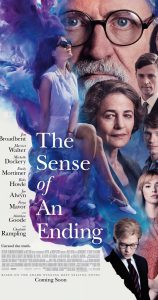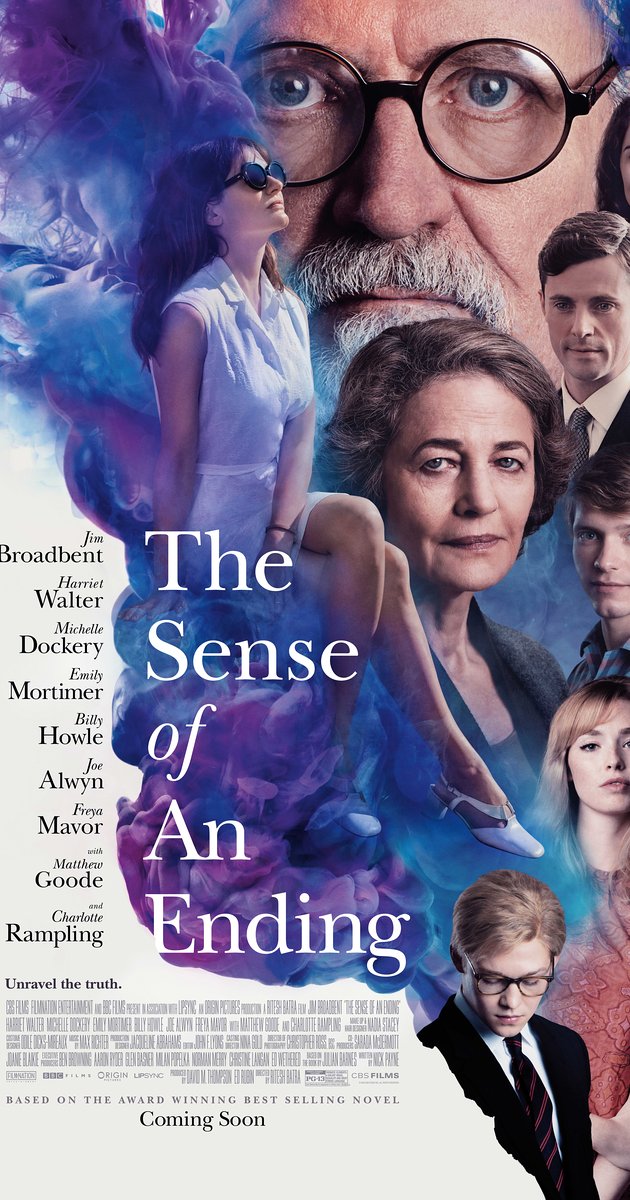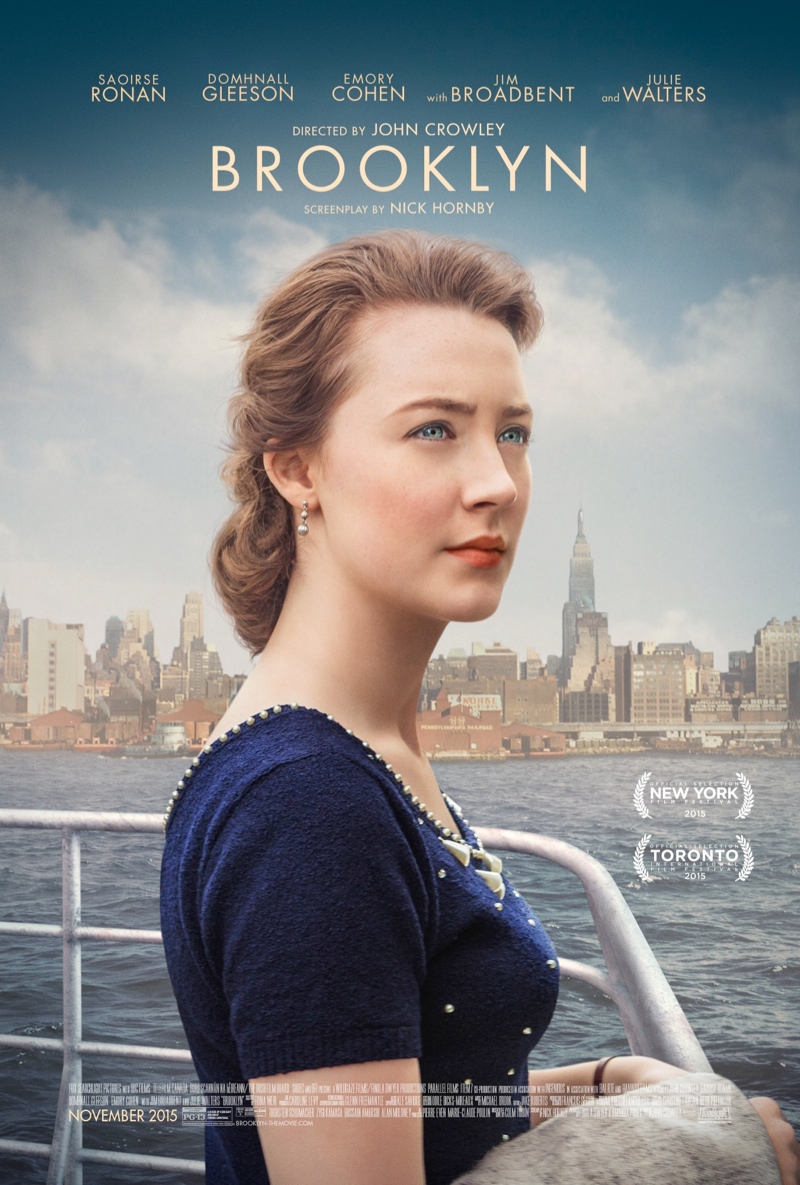The Sense of an Ending
Posted on February 27, 2017 at 8:27 am
B +| Lowest Recommended Age: | Preschool |
| MPAA Rating: | Rated PG-13 for thematic elements, a violent image, sexuality and brief strong language |
| Profanity: | Some strong language |
| Alcohol/ Drugs: | Alcohol |
| Violence/ Scariness: | Suicides |
| Diversity Issues: | None |
| Date Released to Theaters: | March 10, 2017 |

Life is messy. Stories are our way of cleaning it up to help us try to make sense of it. Some of those stories are in books or movies, but most of those stories are just the editing each of us does all the time in telling ourselves and others who we are. Whether it is explaining to a traffic cop why you should not get a ticket or the difference between the “how we met” story of a couple who are still together and one who has split up, or living in a version of Lake Woebegone, “where all the children are above average,” all of us burnish the truth a little to make ourselves feel better and look better.
Julian Barnes’ award-winning novel The Sense of an Ending is the story of a older man who has to rethink the stories he has told himself and realign his understanding of his life. On screen, the delicacy of the performances stands in for the lyricism of his prose.
Tony Webster (Jim Broadbent) is semi-retired, the owner of a store that sells vintage cameras, and kind of semi-married, with a warm, companionable relationship with his lawyer ex-wife, Margaret (Harriet Walter, with a voice like a dry martini). Their daughter Susie (“Downton Abbey’s” Michelle Dockery) loves her dad, but finds him exasperating. She is pregnant, and says that her child will call him “Mudge,” for curmudgeon.
The camera store is significant. The vintage cameras are superbly crafted and in some ways better than digital cameras, but they are expensive and complicated and considered obsolete by most people. Tony identifies with the underappreciated quality of the instruments of precision and gets some satisfaction with being out of step with modern technology and mores.
But his romanticized view of the past is put into sharper focus (those cameras again) when he gets a letter about a bequest from a woman he had not seen since he was in his 20’s, when he was dating a woman named Veronica, and visited her family. After he and Veronica broke up, she dated his close friend Adrian, who later committed suicide. Now Veronica’s mother has left him Adrian’s journal, but that raises many questions: Why did she want him to have it? Where did she get it?
And where is it? Her letter says it is enclosed, but it is not. Tony could let it go, but he stubbornly insists on seeing what it is, without considering where it might lead.
We go back in time, the moments and even the gestures mirroring the present as Tony explores the past and reconsiders many of his most fundamental assumptions about how he has lived his life. Veronica (now played with quiet fury by Charlotte Rampling) will not let him to have the journal. Instead she gives him something else, a letter that will make Tony confront one of his most painful and shameful experiences and open up to his ex-wife as he never has before.
The honesty of story’s portrayal of the foolish and selfish mistakes we make and the hurt they can inflict on people around us is tempered by the film’s tenderness toward its characters and the sensitivity of the performances, especially Broadbent and Walter. It judges them less than Tony is pushed to judge himself, and that is why it is so touching.
Parents should know that this movie includes two suicides, some violence, strong language, sexual references and a situation, and tense confrontations.
Family discussion: Why did Victoria’s mother want Tony to have Adrian’s journal? Why was Tony wrong about Victoria’s brother? Why did he forget about the letter?
If you like this, try: “The Remains of the Day”




